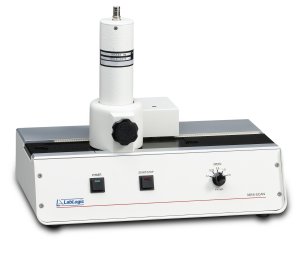Radiopharmacy study determines TLC scanning best practice
11/07/2008

Radiopharmacists at Edinburgh Royal Infirmary have investigated the ideal conditions for measuring RCP of 99mTc radiopharmaceuticals using the Mini-Scan TLC scanner and Laura radiochromatography data collection and analysis software from LabLogic Systems.
The study explored the effect of dead-time at different count rates and determined the optimum method for background correction. Reproducibility of the scanning technique was found to be excellent, with no coefficient of variation greater than 0.3%
The full text of the study includes a table giving ideal dwell times and scan speeds for 99mTc radioactive concentrations from 10 to 1000 MBq/ml.
Mini-Scan can detect all of the commonly used isotopes in nuclear medicine / radiopharmacy / PET centres, and is equally suitable for routine purity checks of radiopharmaceuticals and in-process analysis of reaction mixtures. It accepts up to 6 different detectors to enable detection of a wide range of radio-isotopes, including 32P up to 99mTc and 18F.
Adding still further to the scanner's flexibility are variable scan speeds (0.1, 0.25, 1.0, 2.0 mm/sec) that allow a 5 x 20 cm plate to be analyzed in as little as 100 seconds; and interchangeable detector slits for analysis of activities from 10 nCi up to 100 μCi.
The digital pulse output makes the Mini-Scan TLC scanner system easy to interface to LabLogic's Laura radio-chromatography data collection and analysis software, which is fully GMP- and Part 11-compliant.